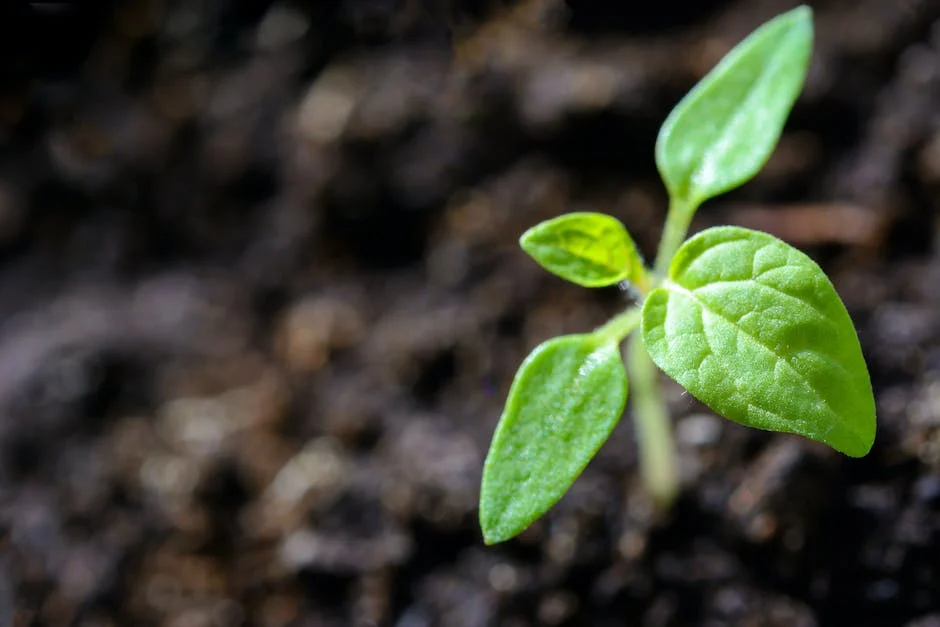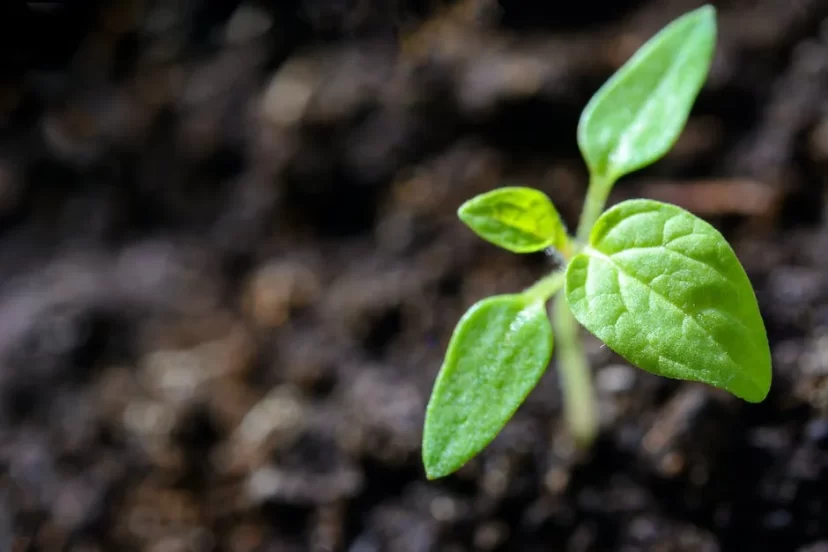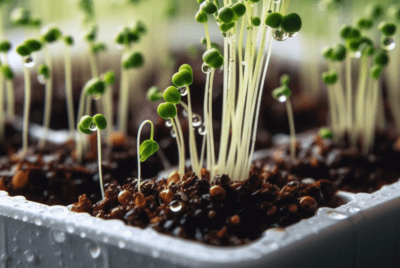Revolutionize Your Gardening: An Introduction to Soil-Based Microgreens Cultivation
What are soil-based microgreens?
Soil-based microgreens are young, edible plants that are grown from the seeds of vegetables, herbs, and other plants. They are typically grown in a shallow container filled with soil, and they are harvested at an early stage of growth, usually when they have developed their first true leaves. Soil-based microgreens are known for their concentrated flavors, vibrant colors, and nutrient-rich content. They are a versatile ingredient that can be used to add a burst of flavor and nutrition to salads, sandwiches, smoothies, and various other dishes.

Benefits of soil-based microgreens cultivation
Soil-based microgreens cultivation offers numerous benefits for gardening enthusiasts. Here are a few reasons why you should consider this method:
- Soil provides essential nutrients for the healthy growth of microgreens, leading to higher nutritional value in the harvested greens.
- The natural environment of soil promotes better root development, resulting in stronger and more vibrant microgreens.
- Soil-based cultivation often requires less maintenance compared to other methods, making it a convenient choice for home gardeners.
- The rich earthy aroma of soil enhances the sensory experience and adds to the overall satisfaction of growing microgreens.
These advantages make soil-based microgreens cultivation a rewarding and promising practice for any gardening enthusiast looking to revolutionize their gardening experience.
Selecting the right soil for microgreens
When growing microgreens, it’s important to choose the right soil. Here are some things to consider:
- The soil should be well-draining to prevent waterlogging, which can cause root rot.
- Look for a soil that is nutrient-rich to support the growth of healthy microgreens.
- A medium with a fine texture is ideal for allowing the tiny roots of microgreens to penetrate and grow easily.
- Organic soil is a great option as it is free from harmful chemicals and pesticides.
Choosing the best microgreens seeds
When choosing microgreens seeds, it’s important to consider the following factors:
- Varieties: Some popular microgreens varieties include broccoli, radish, and arugula. Each variety brings different flavors and textures to your dishes, so choose based on your preferences.
- Germination rate: Look for seeds with a high germination rate, as this will ensure a better yield and less waste.
- Organic vs. non-organic: Consider whether you want to use organic or non-organic seeds. Organic seeds are free from synthetic chemicals and may be preferred if you prioritize sustainability and health.
- Supplier reputation: Choose a reputable supplier who provides high-quality seeds to ensure the success of your microgreens cultivation.
By considering these factors, you can select the best microgreens seeds for your gardening needs.
The process of sowing microgreens seeds
To sow microgreen seeds, follow these simple steps:
- Choose a shallow tray or container with drainage holes to sow the seeds.
- Fill the tray with a thin layer of moistened potting mix or soil up to about 1-2 inches deep.
- Scatter the microgreen seeds evenly across the surface of the soil.
- Gently press the seeds into the soil using a flat object to ensure good seed-to-soil contact.
- Sprinkle a thin layer of soil or vermiculite over the seeds to cover them lightly.
- Mist the soil with water to keep it moist but not waterlogged.
- Place the tray in a warm, well-lit area, away from direct sunlight.
- Continue to mist the soil regularly to keep it moist until the seeds germinate and the microgreens start growing.
Now you’re ready to start your journey into soil-based microgreens cultivation!
Caring for soil-based microgreens
To care for soil-based microgreens, you need to ensure they have the right amount of water and sunlight. Make sure the soil is moist but not waterlogged. Provide them with at least 4 to 6 hours of indirect sunlight daily. Keep an eye on the soil moisture and avoid overwatering, as it can lead to mold growth. Also, monitor for any signs of pests and diseases, and take necessary action to keep your soil-based microgreens healthy and thriving.
Harvesting and storage of microgreens
When harvesting microgreens, it’s essential to cut them just above the soil line using clean and sharp scissors. This allows for regrowth and ensures a continuous supply. After harvesting, make sure to thoroughly rinse the microgreens with cold water and gently pat them dry using paper towels. Once dried, store the microgreens in an airtight container or resealable plastic bags in the refrigerator to maintain freshness. When stored properly, microgreens can typically last between 5 to 7 days, but it’s recommended to consume them as soon as possible for the best flavor and nutritional value.
Common issues and troubleshooting
If your microgreens are not growing well, it might be due to some common issues. Here are a few troubleshooting tips that can help you with your soil-based microgreens:
- Over-watering: Too much water can lead to mold and rot. Make sure to water your microgreens sparingly to avoid this issue.
- Insufficient light: If your plants are not getting enough light, they may become leggy or pale. Ensure they receive adequate sunlight or use grow lights to supplement the natural light.
- Poor soil drainage: If your soil is not draining properly, it can lead to root rot. Consider using well-draining soil or adding perlite to improve soil structure.
- Pests and diseases: Keep an eye out for common pests like aphids and diseases like damping off. Address these issues promptly to prevent them from spreading to your microgreens.
These troubleshooting tips can help you identify and address common problems when cultivating soil-based microgreens.
Nutritional value of soil-based microgreens
Soil-based microgreens are packed with nutrients. They are known to contain significantly higher levels of vitamins, minerals, and antioxidants compared to their mature plant counterparts. According to a study published in the Journal of Agricultural and Food Chemistry, soil-grown microgreens have been found to contain up to 40 times more nutrients than their fully grown counterparts. These tiny powerhouses are rich in essential nutrients like vitamins C, E, and K, as well as beta-carotene and lutein. Incorporating soil-based microgreens into your diet can provide a quick and easy way to boost your intake of these vital nutrients.
Summary and next steps
After learning about soil-based microgreens cultivation, you can start by choosing the microgreens you want to grow and gathering the necessary supplies. Next, prepare your soil and plant the seeds, making sure to water and provide the right amount of light. Keep an eye on the sprouting process and adjust conditions as needed. Once your microgreens have reached the desired size, it’s time to harvest and enjoy them in your meals!



